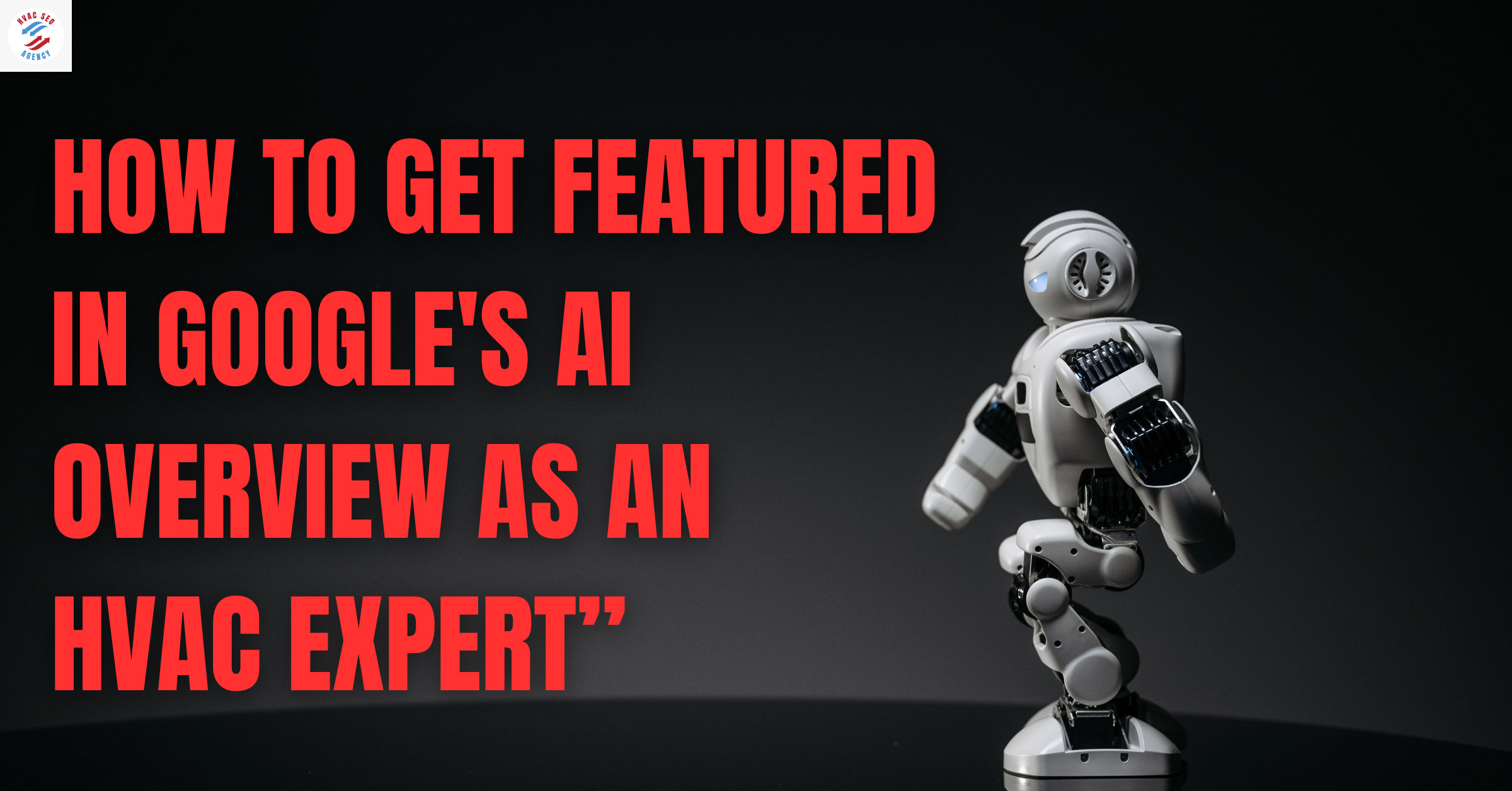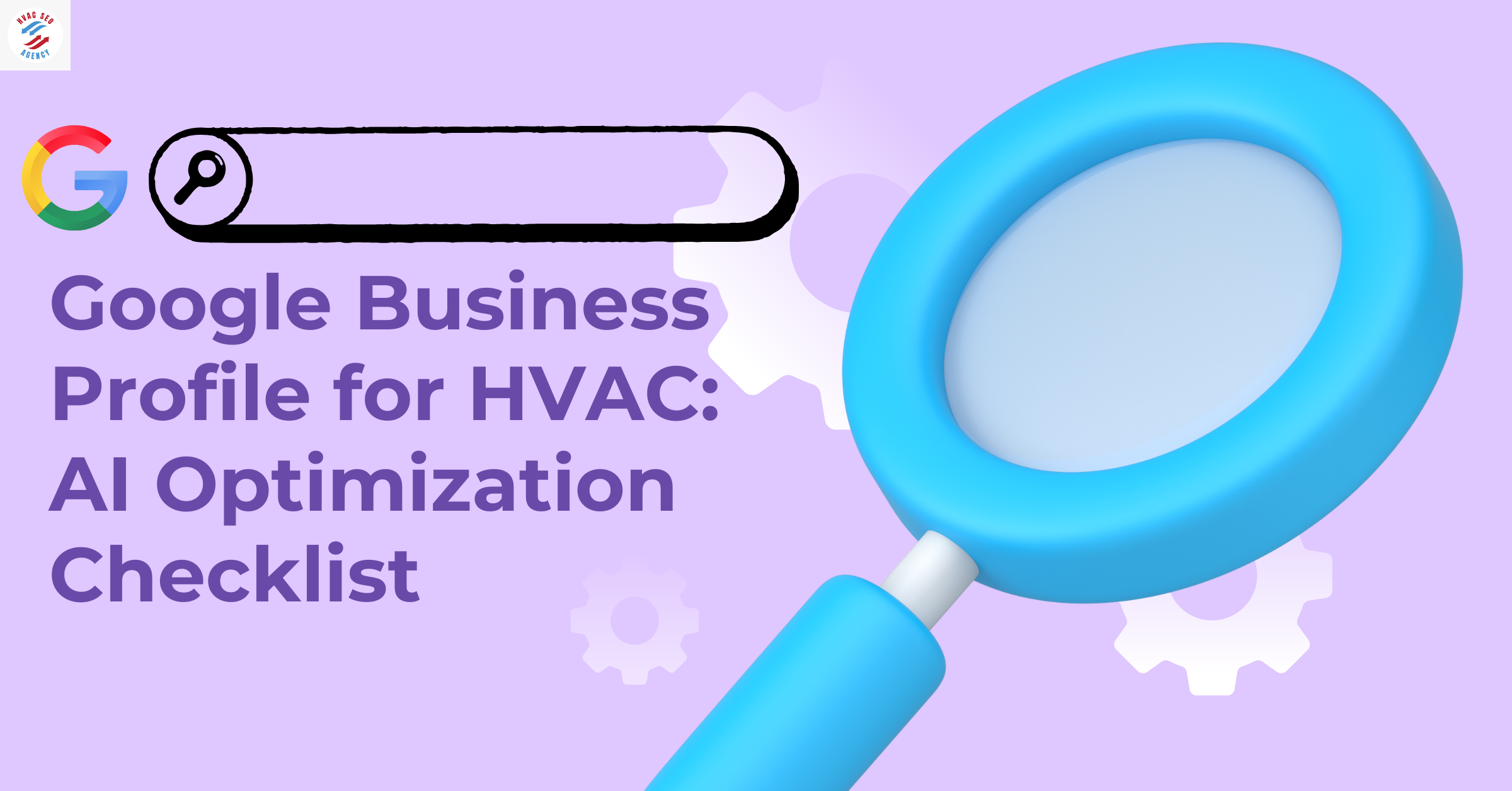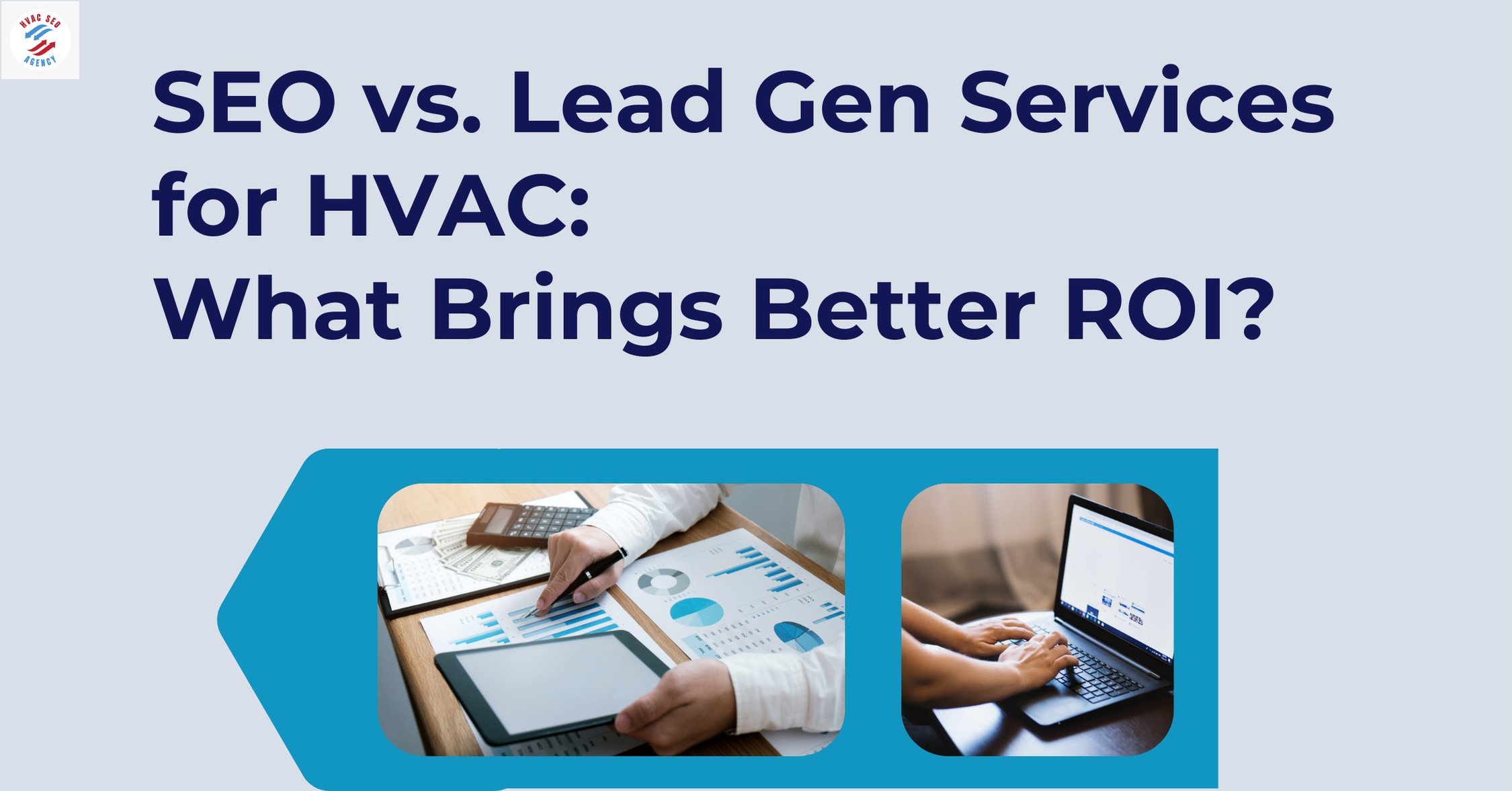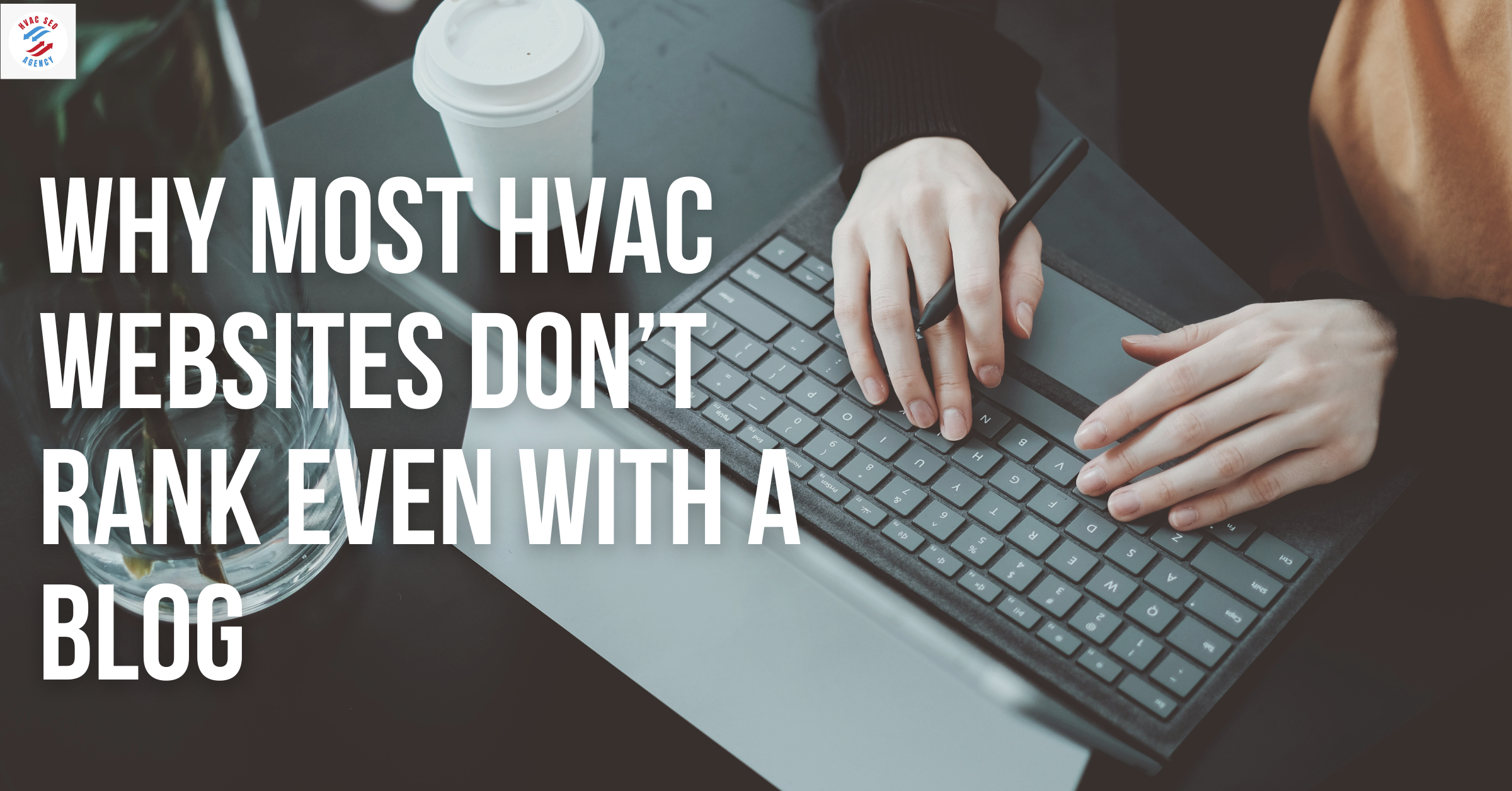Best Practices for Following Up with HVAC Leads & Increasing Conversions
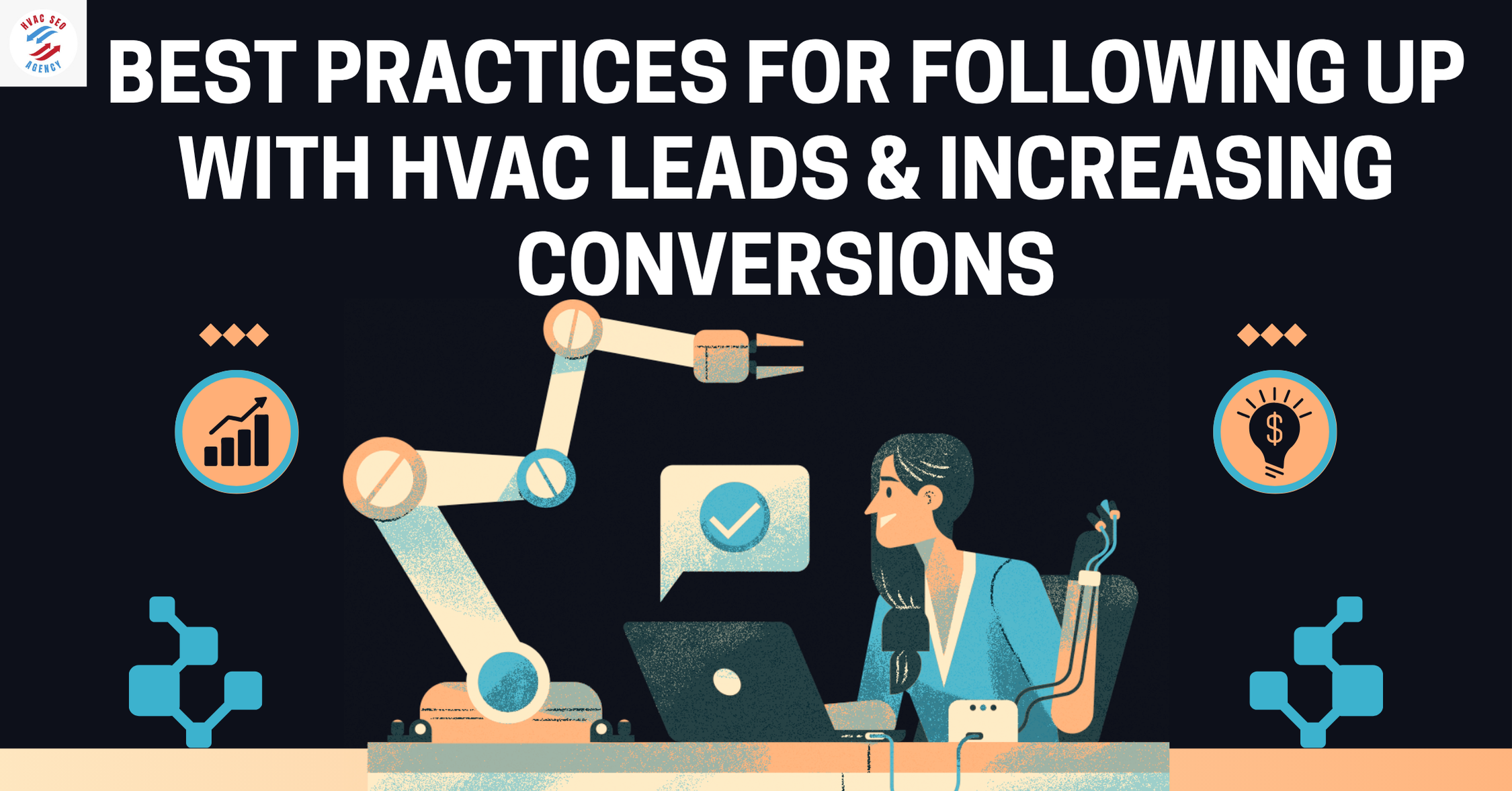
Section 1: Why HVAC Lead Follow-Ups Fail Without the Right Digital Marketing Foundation
Successful HVAC lead follow-ups don’t begin with a phone call; they start at the moment someone finds your business online. In today’s market, the ability to convert leads into booked jobs depends heavily on how discoverable, visible, and trusted your company appears before you even speak to a potential customer.
The Marketing Blind Spot: Missed Leads from Poor Online Visibility
Many HVAC companies pour money into outbound calls and sales teams, but ignore the quality of their lead acquisition pipeline. If your website is not ranking, if your ads aren’t optimized, or if your business doesn’t show up in Google’s Local Pack you’re setting your follow-ups up to fail.
That’s why having a strong SEO for HVAC Companies in Sacramento strategy is critical. Local SEO ensures your company ranks for “HVAC repair near me,” “AC installation in [City],” and dozens of other geo-targeted keywords that drive warm leads to people actively searching for your services.
On the other hand, PPC for HVAC Contractors can drive instant traffic and leads with high intent. But without the right follow-up strategy in place, most PPC leads go cold within hours.
Table: Lead Decay Rate for HVAC Inquiries Without Timely Follow-Up (Source: LeadSimple, 2024)
Source: HomeAdvisor Data Analysis, 2023
Section 2: Price Your HVAC Services for Maximum Profit and Better Lead Quality
Before you even initiate a follow-up, your pricing strategy is already filtering the types of leads you’ll receive. Competitive but profitable pricing not only increases conversion chances it also attracts the right kind of client: informed, serious, and ready to book.
Why Strategic Pricing Impacts Lead Conversion
If your prices are unclear, too high without justification, or buried deep in your site, potential clients are more likely to bounce or choose a competitor who communicates pricing with transparency. The first step in improving your HVAC lead follow-ups is attracting high-quality leads through optimized pricing.
To price your HVAC services for maximum profit, consider cost of labor, material variability, seasonal demand, and local market rates. Then, align this pricing structure with persuasive messaging on your landing pages and ads to create expectation alignment.
Table: Average HVAC Service Costs in Major U.S. Cities (Source: HomeAdvisor, 2024)
Source: HVAC Consumer Survey Report, 2023
Pro Tip:
Bundle service packages (e.g., seasonal tune-ups + filter change + priority support) to increase perceived value while keeping margins intact. Clients are more likely to respond to follow-ups when they believe they’re getting a well-priced, all-in-one deal.
How It Connects to Follow-Up Success:
Clear, fair pricing earns trust making your follow-up feel like a continuation of value, not a pushy sales call.
Pricing misalignment often leads to ghosting after first contact. Pricing clarity upfront reduces this.
When you price your HVAC services for maximum profit, you also filter out bargain hunters who are least likely to convert.
Section 3: Your HVAC Business Needs a Professional Website to Support Effective Lead Follow-Ups
Your website is your first impression and often your last chance to capture Leo's attention. Before a follow-up call or email ever reaches a prospect, they’ve already judged your business based on the quality of your website. That’s why your HVAC business needs a professional website that is fast, mobile-optimized, and designed to convert.
Why Website Design Affects Follow-Up Success
A dated or slow-loading website immediately signals a lack of professionalism and trust. Even if your team follows up within five minutes, poor website design can leave leads hesitant or unresponsive. Today’s customers expect speed, clarity, and convenience especially when it comes to urgent HVAC issues like broken ACs or heating failures.
A professional website does the heavy lifting by:
Displaying services, pricing, and contact forms prominently
Offering 24/7 booking and live chat features
Reinforcing trust with reviews, certifications, and licenses
Capturing lead data for automated follow-ups
Table: Essential Features HVAC Customers Expect on a Website (Source: BrightLocal, 2024)
Source: Google Web Performance Benchmarks, 2023
Pro Tip:
Work with an HVAC SEO Agency to build a conversion-optimized site that is not only visually appealing but also ranks for “AC repair near me,” “HVAC services in [City],” and other high-converting terms. A well-built site reinforces your follow-up strategy, while a bad one undermines it.
How It Ties to Lead Follow-Ups:
A fast, modern website increases form submissions giving you more leads to follow up with.
Pages with click-to-call buttons and live chat shorten response time and reduce lead drop-off.
Conversion-optimized landing pages support HVAC lead follow-ups by increasing trust and urgency.
Section 4: Should Your HVAC Business Buy Leads or Focus on Organic Growth?
When building a pipeline of potential customers, many HVAC companies face a crucial decision: should your HVAC business buy leads or focus on organic growth? Each approach comes with its pros and cons but only one truly supports long-term lead conversion and high ROI.
Buying Leads: A Quick Fix with High Competition
Buying leads from platforms like HomeAdvisor, Angi, or Thumbtack can produce fast results. However, these leads are often sold to multiple contractors, meaning you're in a bidding war the moment you pick up the phone. Your team’s follow-up needs to be instant and highly persuasive, or you risk losing the job in minutes.
While lead buying might temporarily fill your schedule, it’s not a sustainable strategy for brand growth. Worse, your conversion rates can plummet due to lead fatigue and lack of exclusivity.
Organic Growth: The Scalable Path to High-Quality HVAC Leads
Focusing on organic growth through SEO, Google Business optimization, content marketing, and social proof results in leads who find you and are already primed to trust your service. These prospects aren’t shopping a lot; they’re looking for the best HVAC company near them.
Organic leads cost less over time and tend to convert better with follow-up because the trust-building already began during their online search journey.
Table: Comparison – Buying Leads vs. Organic Lead Generation (Source: BrightLocal & Search Engine Journal, 2024)
Source: HubSpot HVAC Marketing Benchmark Report, 2023
Pro Tip:
If your HVAC business buys leads, use them only as a short-term supplement. The real growth comes when you shift focus toward organic strategies with the help of a specialized HVAC SEO Agency boosting both your visibility and follow-up success.
How This Influences Lead Follow-Up Strategy:
Paid leads require ultra-fast and aggressive follow-ups to beat competitors.
Organic leads are warmer, higher-intent, and more responsive to follow-up calls, emails, and remarketing efforts.
For scalable lead generation and higher conversions, focusing on organic growth is the long-term winning strategy.
Section 5: The Role of IoT in Modern HVAC Equipment and Its Impact on Lead Conversion
As the HVAC industry embraces smart technology, the role of IoT in modern HVAC equipment is becoming a key selling point for both residential and commercial customers. Today’s consumers are tech-savvy; they want energy-efficient systems that they can monitor, control, and optimize via smartphone apps or voice assistants like Alexa and Google Home.
When you understand how IoT enhances HVAC systems, your follow-up messaging can become significantly more persuasive, especially to homeowners looking for energy savings, automation, and long-term value.
Why IoT Features Help Improve HVAC Lead Follow-Ups
When a prospect inquires about HVAC installation or replacement, discussing smart features like remote control, energy tracking, or predictive maintenance provides a compelling reason to convert. These features move your offering from a basic service to a modern upgrade boosting your perceived value and increasing conversion likelihood.
Table: Key IoT Features Customers Look For in HVAC Systems (Source: Statista, 2024)
Source: ResearchAndMarkets Report, 2024
Pro Tip:
Train your sales and follow-up teams to lead with value and emphasize how IoT in modern HVAC equipment helps clients save energy, reduce maintenance costs, and gain convenience. Leads interested in these benefits tend to convert faster and are willing to pay a premium.
How It Enhances Follow-Up Conversion:
Leads are more responsive when follow-ups mention energy efficiency and convenience.
Smart HVAC features create urgency especially when promoted during seasonal utility bill spikes.
Personalizing your HVAC lead follow-ups with IoT-related benefits builds trust and addresses high-priority concerns for modern buyers.
Section 6: Automate Your HVAC Lead Follow-Ups Without Losing the Human Touch
Speed is everything in lead conversion, but that doesn't mean blasting generic messages through a CRM tool is enough. The most successful HVAC businesses today automate their lead follow-ups while still maintaining personalization and relevance in every communication.
Why Automation Alone Isn’t Enough
Automation tools like email responders, SMS systems, and CRM drip campaigns are necessary to keep up with lead volume. But if your automated responses are vague, robotic, or off-timing, you’ll lose the trust that personalization builds.
Instead, combine automation with strategic input segment leads by service type (e.g., AC repair vs. ductless installation), urgency, and location. This allows your automation tools to send the right message at the right time with the right tone.
Table: Ideal HVAC Lead Follow-Up Cadence (Source: HubSpot HVAC Conversion Study, 2023)
Source: BrightLocal HVAC CRM Data, 2023
Tools to Use for Smart HVAC Follow-Up Automation:
ServiceTitan, Housecall Pro, or Jobber: HVAC-specific CRMs for automated scheduling, follow-up, and invoicing.
Twilio & Mailchimp: For SMS and email campaign sequencing.
Zapier Integration: To automate between your contact forms and follow-up software.
Best Practices:
Always follow automated emails with a real human response within 24 hours.
Personalize by using the lead’s service interest, location, and urgency level.
Never end automation sequences without a clear call to action (e.g., “Reply YES to confirm your slot” or “Click to schedule”).
How This Boosts Follow-Up Conversions:
Automated messages ensure no lead is forgotten.
Personalization helps convert cold leads into warm prospects.
Combining speed + relevance is the formula for HVAC conversion tips that actually work.
Section 7: Train Your HVAC Team to Follow Scripts That Convert
Even with automation and marketing tools in place, it’s your team’s communication that ultimately seals the deal. A fast follow-up loses its value if your technician or sales rep doesn’t know how to build trust, handle objections, or close the appointment effectively. That’s why your team should follow structured follow-up scripts tailored for different lead types.
Why Scripts Matter in HVAC Lead Follow-Ups
HVAC leads come in with varying urgency, service requirements, and knowledge levels. Some need emergency repairs; others are price-shopping or just exploring options. Without a customized approach for each scenario, your team may come across as either too aggressive or too passive both of which tank conversions.
Best Practices for Script-Driven Follow-Ups:
Use the customer’s first name and service needs in the first sentence.
Lead with value or urgency not with “Are you still interested?”
Train staff to ask open-ended questions and set a next-step commitment.
Use CRM notes so the next team member can follow up with context.
How It Enhances HVAC Conversion Tips:
Scripts standardize quality across teams and time zones.
They reduce drop-off from weak or untrained responses.
When paired with a CRM, scripts help build long-term rapport and improve rebooking rates.
Section 8: Leverage CRM Tools to Track, Segment, and Retarget HVAC Leads
Once a lead enters your system, the ability to track, segment, and retarget becomes critical to converting them over time. This is where a robust CRM (Customer Relationship Management) system plays a pivotal role. CRMs help you organize follow-ups, automate reminders, personalize communication, and track lead history so no opportunity slips through the cracks.
Why CRM Tools Are Non-Negotiable for Modern HVAC Businesses
Without a CRM, follow-up tasks often live in notebooks, spreadsheets, or employee memories. This leads to inconsistent contact timing, missed callbacks, and lost revenue. A CRM centralizes all lead data, ensures every touchpoint is recorded, and allows you to build workflows tailored to lead type and service category.
Table: Top CRM Features HVAC Companies Use for Lead Follow-Up (Source: Housecall Pro Survey, 2024)
Source: Jobber & ServiceTitan Internal Benchmarks, 2023
Pro Tip:
Choose a CRM built for service-based businesses like ServiceTitan, Jobber, or Housecall Pro so your team can automate follow-ups and manage field scheduling within the same platform.
How CRMs Support Better HVAC Lead Follow-Ups:
Automated workflows ensure no lead is ignored.
Segmentation allows you to tailor follow-ups based on service interest.
Historical data enables smarter, more personal conversations.
Section 9: Use Reviews and Social Proof to Strengthen Follow-Ups
In a competitive HVAC market, leads often hesitate before booking especially if they’re comparing multiple contractors. One of the most powerful tools you can use in your HVAC lead follow-ups is social proof, including Google reviews, video testimonials, and case studies.
When follow-up messages include links to 5-star reviews or real client stories, they don’t feel like sales pitches, they feel like trust-building conversations.
Why Reviews Matter During the Follow-Up Process
Consumers trust other consumers. In fact, a study by BrightLocal shows that 87% of people read online reviews for local businesses, and 72% say positive reviews make them more likely to use a service. Including a relevant review in your follow-up email or SMS (e.g., “Here’s what a customer said about our furnace installation”) can nudge hesitant leads toward booking.
Pro Tip:
Create a “Review Kit” for your follow-up team with links to your best Google reviews, testimonial videos, or even short case studies. Embed them in emails or drop them as follow-up texts with lines like, “This is what our clients say when they choose us over the competition.”
How Social Proof Supports Conversion:
Adds validation to your pricing and expertise
Reduces follow-up friction by building instant trust
Makes cold leads feel warmer by showing real-world outcomes
Section 10: Master the Timing, Persistence, and Channels of HVAC Lead Follow-Ups
Even with automation, reviews, and strong sales scripts, the when, how often, and where of your follow-ups can make or break your lead conversion rate. Effective HVAC lead follow-ups don’t rely on a single call or message. They follow a tested rhythm across multiple platforms always focused on value, not pressure.
Why Timing and Multi-Channel Outreach Matter
A survey by InsideSales shows that 50% of sales go to the first business that responds but that doesn’t mean a single call is enough. On average, it takes 6 to 8 touches to convert an HVAC lead. The most successful contractors build a follow-up cadence using email, SMS, phone calls, and even retargeting ads.
Graph: Lead Conversion Rates by Follow-Up Touch Count
Pro Tip:
Use a structured follow-up schedule that combines speed (first 5 minutes), consistency (multiple days), and variety (different platforms). Don't just follow up once and move on. Let your system work gradually, reminding the lead why you are the best choice.
The Final Word on Follow-Up Strategy:
Speed + Personalization wins the first impression
Persistence + Value wins the conversion
Use every digital tool available CRMs, SEO, PPC, reviews, and automation to systemize success
FAQs: HVAC Lead Follow-Ups & Conversions
1. How soon should I follow up after receiving a lead?
Within 5 minutes. Research shows that contacting HVAC leads within the first 5 minutes increases your chances of conversion by up to 78%.
2. Should I buy leads or focus on organic marketing?
Both have value, but organic leads generated through SEO and content marketing offer better ROI, higher trust, and stronger conversion rates. Buying leads can supplement, but shouldn't be your primary strategy.
3. What tools can help automate HVAC lead follow-ups?
Top CRM platforms like ServiceTitan, Jobber, and Housecall Pro offer automation for emails, SMS, scheduling, and tracking making sure no lead slips through the cracks.
4. How many follow-ups should I make before giving up?
At least 6–8 touches across different channels (calls, SMS, email, ads) are recommended. Persistence significantly increases conversion probability.
5. How can I make my HVAC website generate more leads?
Your HVAC business needs a professional, fast-loading website with clear service descriptions, visible reviews, mobile responsiveness, and easy-to-use contact forms. Partnering with an Affordable HVAC SEO Agency can help you build one that ranks and converts.
6. What should I say during a follow-up call?
Use customized scripts based on the service the lead requested. Focus on urgency, value, and next steps not pressure. Personalization is key.
7. How important are reviews in follow-up emails or SMS?
Extremely. Including positive reviews or video testimonials in follow-ups builds credibility and nudges hesitant leads toward booking.
Conclusion:
Mastering HVAC lead follow-ups is no longer optional; it's the backbone of sustained growth in a highly competitive industry. Fast responses, smart automation, professional websites, transparent pricing, and a persistent multi-touch strategy form the foundation of high-converting campaigns.
Whether you're leveraging SEO for HVAC companies in [City], running PPC for HVAC contractors, or automating outreach with a CRM, remember this: Leads are not opportunities until they're followed up with properly, repeatedly, and professionally.


